We are excited to announce the winners of the 2021 Beauty of the Brain image contest! Each winner will receive $200. This year we received 27 submissions, of which the below six images were selected. Thank you to all who took the time to send us your images and to the 140 people who voted for their favorites. A gallery of this year’s submissions can be found here. Full image descriptions are visible if you click on the “I” information symbol on the corner of the image. You can also see full-size versions by clicking on each image.
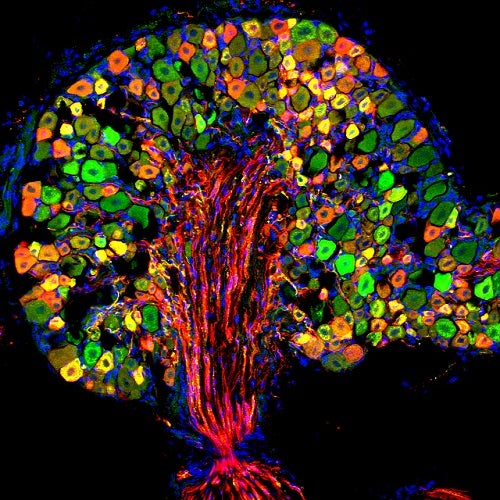
Mouse Dorsal Root Ganglia
Daping Yang
Lab of Isaac Chiu
Harvard Medical School
Sensory neurons mainly arise from dorsal root ganglia (DRG), which express abundant amounts of CGRP (green). This DRG was collected from a mouse infected with peripheral neuron tropism adenovirus carrying tdTomato (red), which has a large proportion of overlap with CGRP as shown by the merged color (yellow). The cell nucleus is labeled by DAPI (blue).
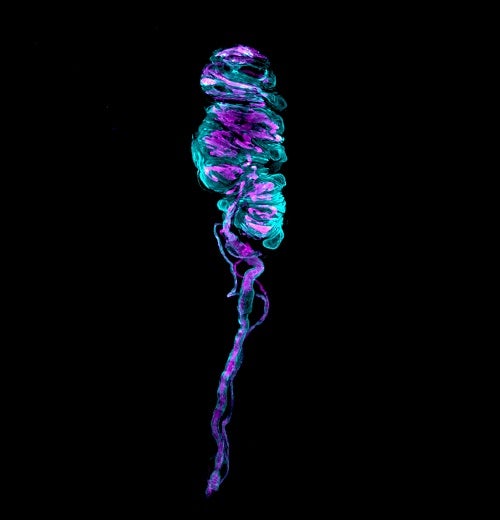
The Human Meissner Corpuscle
Ilayda Alkislar
Lab of David Ginty
Harvard Medical SchoolMeissner corpuscles are specialized encapsulated nerve endings located primarily within the dermal papillae of non-hairy (glabrous) skin like the palms of our hands and soles of our feet. These peripheral mechanoreceptors relay light touch and low-frequency vibration sensation to the central nervous system to shape our perception of touch. The Meissner corpuscle shown here is from a glabrous skin biopsy (at the base of the finger) of a fellow member of the Ginty lab.
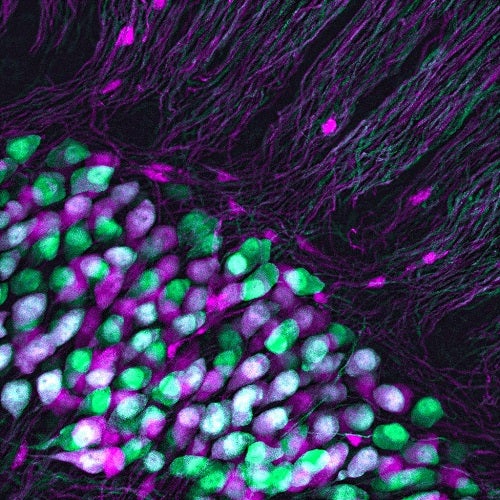
Spiral Ganglion Neuron Diversity
Isle Bastille
Lab of Lisa Goodrich
Harvard Medical SchoolFor us to hear, spiral ganglion neurons (SGNs) transmit sound information from our ear to our brain. These neurons are quite diverse because they have to communicate a huge range of sound features with high speed and fidelity. On the lower left are the molecularly diverse SGN cell bodies stained for various subtype markers. These cell bodies send radial projections into the upper right. These radial projections are exquisitely organized according to the frequency of sound that they transmit from mechanically sensitive hair cells in our cochlea (not shown) to our brain.
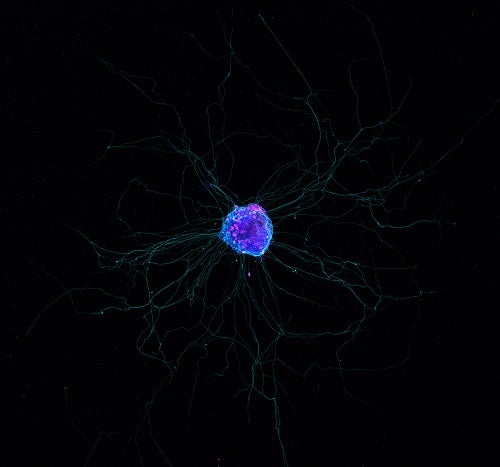
Let There Be Sound
Volkan Ergin
Lab of Zheng-Yi Chen
Massachusetts Eye and Ear InfirmaryWe hear the world using precisely organized cochlear neural networks, which transmit acoustic information to the brain via their axonal compartments. Axons are vulnerable to injuries such as loud noises, drugs, and aging. Here is an image of auditory neurons, cell bodies shown in magenta, and growing axons in cyan. Accelerated axon outgrowth is achieved by treatment with a mixture of three proteins that were detected by using cutting-edge techniques, and found to be secreted by regenerated hair cell-like cells.
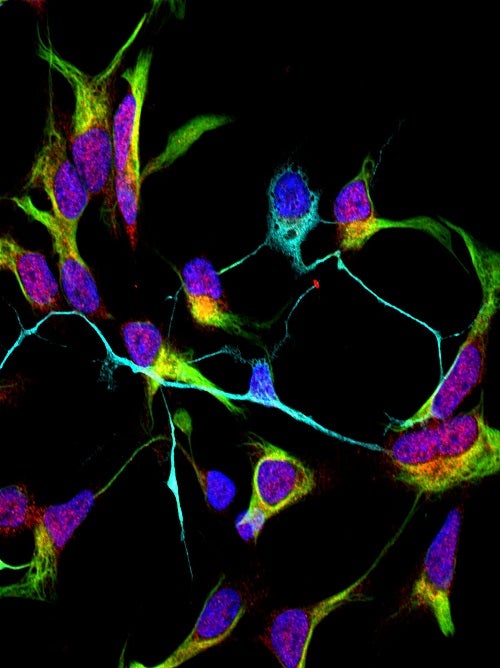
Neuronal Stem Cells Differentiating Into Neurons
Katharina Meyer
Lab of Bruce Yankner
Harvard Medical SchoolNeuronal stem cells derived from human induced pluripotent stem cells. Certain environmental cues relocate the gene repressor REST (pink), which then drives activation of neuronal maturation genes. This leads to the differentiation of neuronal stem cells (green) into immature neurons (turquoise).

Will Xiao
Lab of Margaret Livingstone
Harvard Medical SchoolWhat is a face in the mind’s eye? We synthesized images to reveal monkey neurons’ idea of a face, using an iterative process akin to natural selection. We searched for images that, when viewed by the monkey, would lead to strong responses in a target neuron. A population of images was rated by the neuron, selected, recombined, and mutated. These steps were enabled by artificial neural networks that described images in a condensed format, as lists of numbers. These numbers were the “genes” undergoing evolution, whereas the neural networks converted these numbers into the images rated by neurons.
News Types: Community Stories
